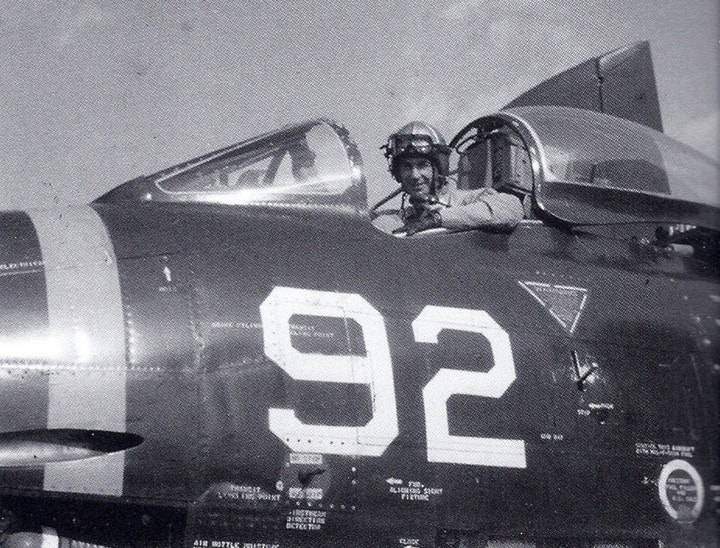A Balfour native shot down over France who twice escaped his German captors — and then convinced his guards to desert with him — has died at 89.
Commander Tony Shaw was flying in a tactical reconnaissance between Nimes and Avignon with 879 Naval Air Squadron on August 21, 1944 when artillery fire struck his plane.
With smoke filling the cockpit and flames licking his feet, he turned his Seafire upside down and jettisoned the hood, but remained trapped as the plane plummeted. He strained to push the control stick forward — and then went tumbling through the air until his parachute deployed.
Soon captured, Shaw was placed in the back of a truck retreating north along the Rhone valley. For three days he secretly unlashed the cover before escaping. The next day, however, he was recaptured and forced to march north to Grignan with a two-man escort. Shaw talked to his guards in basic German and convinced the older of the two, whom he called Konrad, that he was fed up with the war. He didn’t know Konrad had orders to shoot him and dump his body.
To his surprise, Konrad and another soldier offered to join him in a bid to reach and surrender to the Allies, providing Shaw could promise their safety. Shaw contacted the Resistance, who sheltered the three men until the American army arrived.
For his escapes and assisting with the German soldiers’ surrender, he was made a member of the Order of the British Empire. Months later, he received a letter from the pair, now prisoners of war at an Arizona farm. He never revealed their identities.
A perfect place to start life
Anthony Ian Rawlinson Shaw was born September 5, 1923 at Balfour, where his father recuperated at the sanitarium for returned soldiers — formerly the CPR’s elegant Kootenay Lake hotel. Capt. George Shaw had been seriously wounded at Ypres in 1915.
In his memoir, The Upside of Trouble, Tony said Balfour was the perfect place to begin life. In 1927, his sister Ann was born aboard the SS Kuskanook while en route to hospital in Kaslo. “The Captain expressed the perhaps forlorn hope that she would be named after the vessel,” Shaw wrote. (Decades later, Ann donated photos of the Prince of Wales’ 1919 visit to Balfour to the Nelson museum.)
The family, including elder brother Barry, moved to Riondel the following year, where Shaw’s father was accountant and personnel manager at the Bluebell mine. According to Ted Swenson in Bluebell Memories, as a piano player and old music hall man, George “was the mainstay in all our entertainment. Full-back on our soccer team, he also organized sports events, tennis tournaments, etc. Due to his efforts the seven-day work week was not quite so hard to take as there always seemed to be something to practice for or attend.”
Tony had many fond memories of Riondel, including his favourite beach and picnic spot: “Called North Bay, it was accessible on foot; but this meant walking through a field in which the local farmer, Mr. McGarvey, kept several large and fierce-looking bulls. I do not know that anyone was actually attacked, but the possibility of such an encounter was reason enough for us to make the journey to the beach by boat.”
At the Depression’s onset in 1930, the Bluebell mine closed and the Shaw family moved to England. At 18, Tony joined the navy as an airman. He qualified in deck landings at sea and first flew a Spitfire, which gave him “an indescribable feeling of elation.”
With 879 squadron, he also flew in support of Allied landings at Sicily and Salerno and saw action over the Malay Peninsula before VJ Day. After the war, Shaw became a test pilot and flew 65 different aircraft totalling more than 4,500 hours.
His last navy appointment was as defence advisor in Sierra Leone. Shaw, who settled in Fife, Scotland in 1989, died November 21. He’s survived by his second wife and two sons.
— With thanks to Peter Hore for providing the text of his obituary of Tony Shaw and excerpts from The Upside of Trouble.
